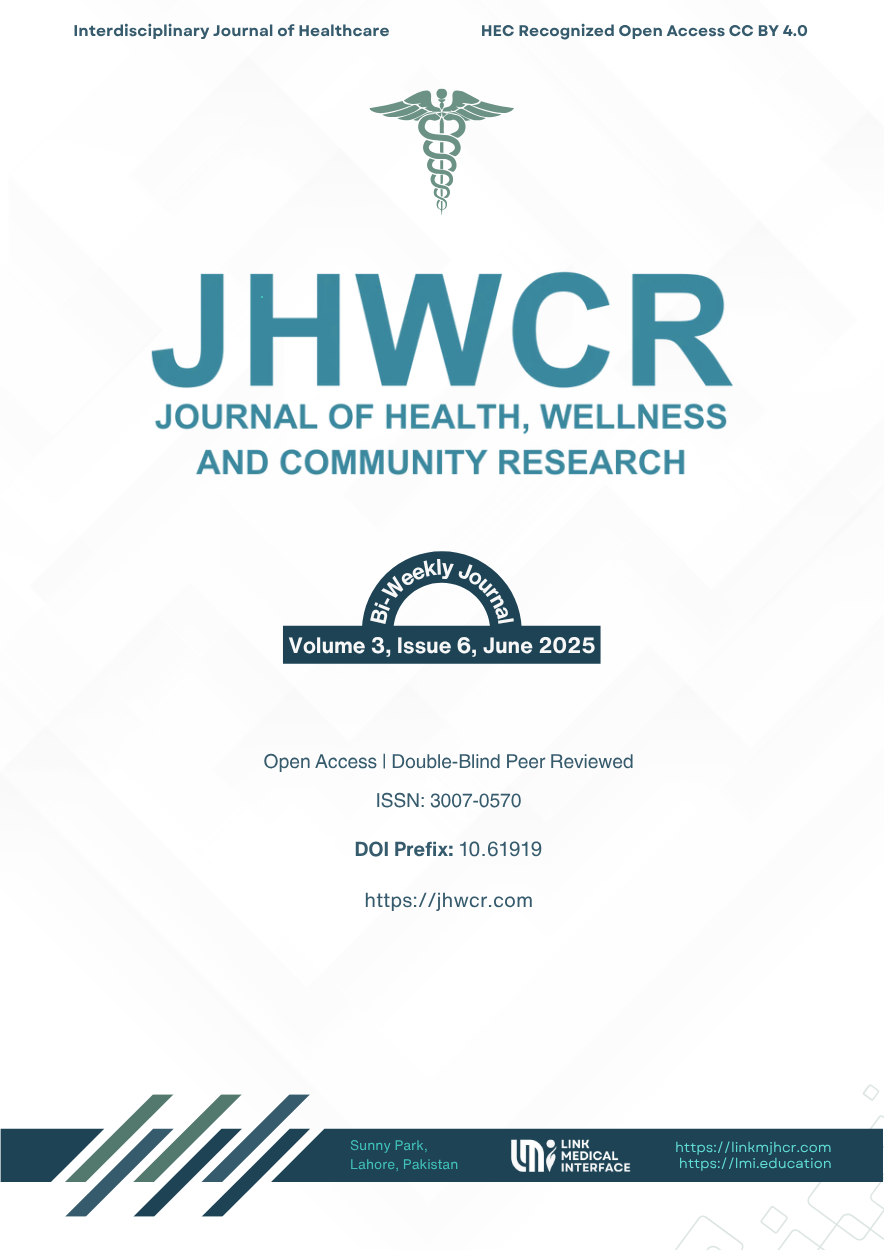Outcomes of Primary Posterior Sagittal Anorectoplasty in Female Patients with Recto-Vestibular Fistula
DOI:
https://doi.org/10.61919/tm0yx689Keywords:
Recto-vestibular fistula, Posterior sagittal anorectoplasty, Anorectal malformations, Surgical outcomes, Maternal education, Rural health, PediatricsAbstract
Background: Recto-vestibular fistula is the most common anorectal malformation in female children, with primary posterior sagittal anorectoplasty (PSARP) as the preferred surgical approach. However, the impact of sociodemographic factors on surgical outcomes remains understudied in low-resource settings. Objective: This study aimed to evaluate the postoperative outcomes of primary PSARP in female patients with recto-vestibular fistula and assess the influence of residence, maternal education, and age at surgery on complication rates. Methods: A descriptive observational study was conducted at the Department of Pediatric Surgery, Khyber Teaching Hospital, Peshawar, enrolling 108 female children aged 2 months to 12 years with confirmed recto-vestibular fistula. Patients with other anorectal anomalies or prior surgical intervention were excluded. Data were collected on demographic and socioeconomic factors, surgical site infection (SSI), recurrent fistula, and need for redo anoplasty using standardized forms. Statistical analysis was performed with SPSS version 25, applying chi-square tests and odds ratios with 95% confidence intervals. Ethical approval was obtained in accordance with the Helsinki Declaration. Results: The mean age at surgery was 6.4 ± 3.2 months. SSI occurred in 19.4% and recurrent fistula in 4.6% of cases. Rural residence and low maternal education significantly increased the risk of SSI (OR 2.85, 95% CI: 1.04–7.85, p=0.041; OR 3.38, 95% CI: 1.10–10.42, p=0.036) and recurrence (p=0.038 and p=0.047, respectively), while age at surgery was not a significant predictor. Conclusion: Primary PSARP offers favorable outcomes in female children with recto-vestibular fistula, but higher complication rates are associated with rural residence and maternal illiteracy. Enhanced perioperative support and targeted health education may reduce these disparities and improve surgical prognosis.
Downloads
Published
Issue
Section
License
Copyright (c) 2025 Muhammad Imran, Verdah Qadir Baloch, Muhammad Arshad, Sania Malik, Muhammad Nabeel Hayat (Author)

This work is licensed under a Creative Commons Attribution 4.0 International License.


